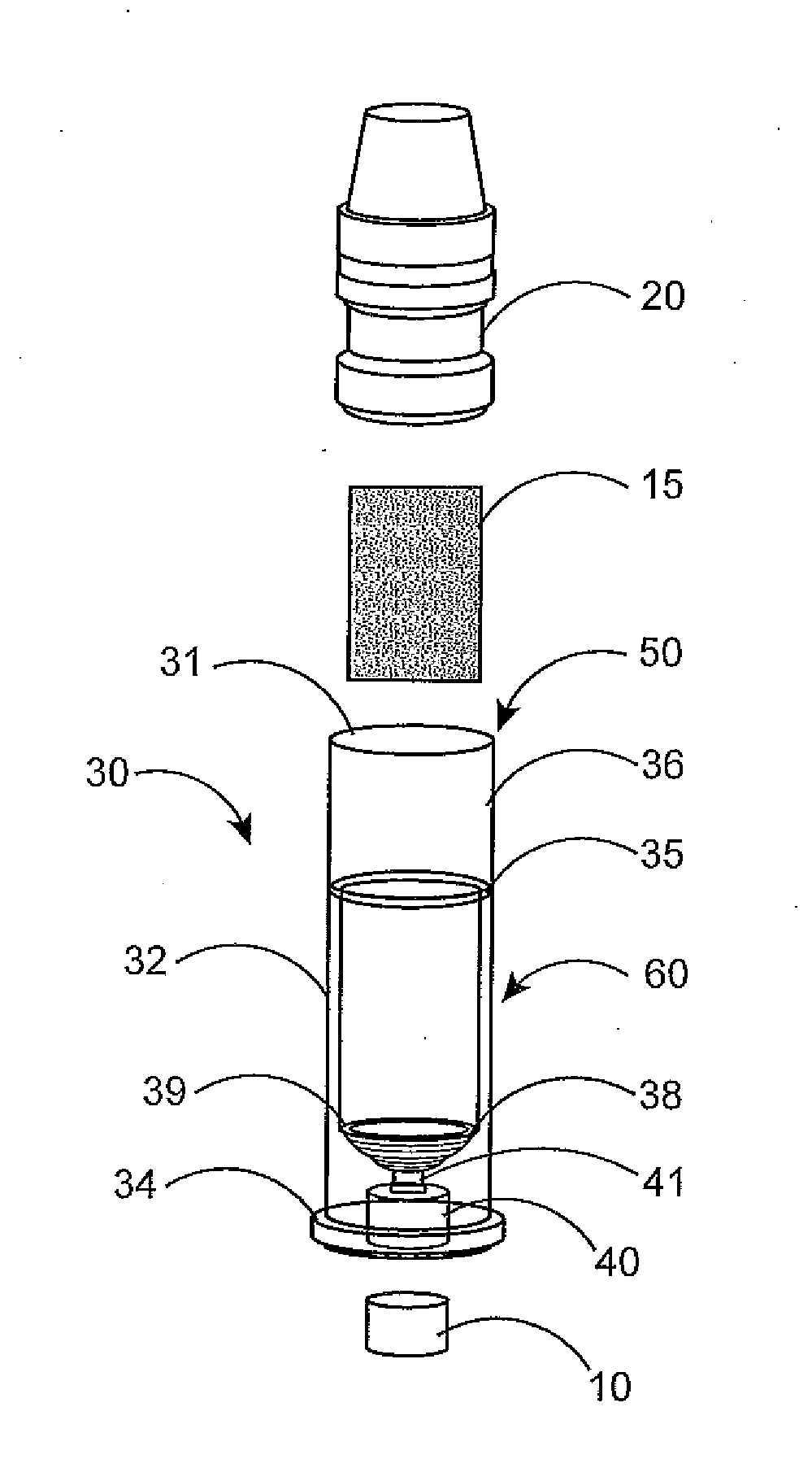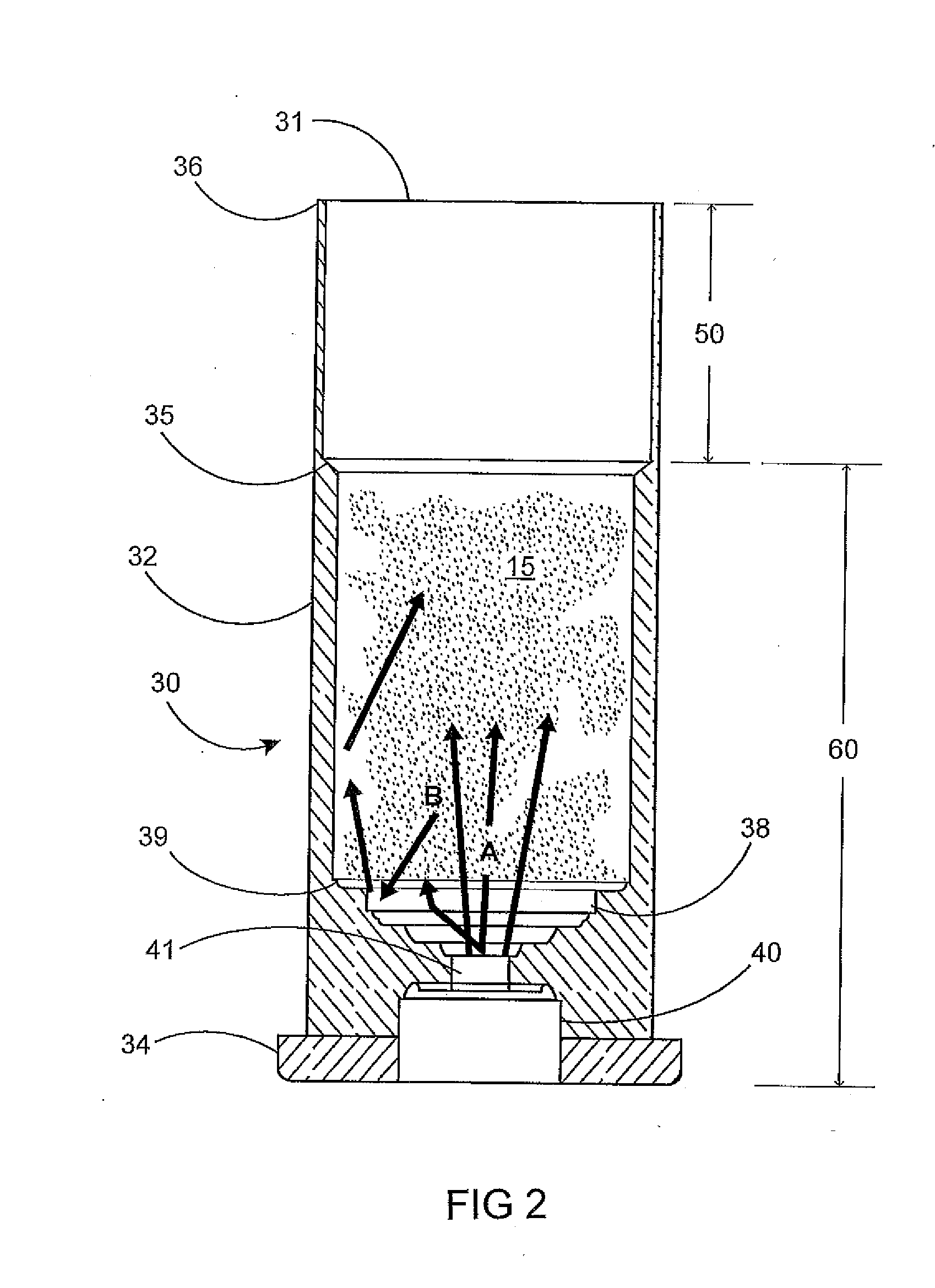Reusable Plastic Ammunition Casing
a plastic and ammunition technology, applied in the field of ammunition casings, can solve the problems of significant tooling, increased raw material cost, and relative heavy weigh
- Summary
- Abstract
- Description
- Claims
- Application Information
AI Technical Summary
Benefits of technology
Problems solved by technology
Method used
Image
Examples
Embodiment Construction
[0019]The preferred embodiment of the reloadable plastic casing 30 used for ammunition is shown in FIGS. 1-3. As depicted in FIG. 1 by exploded perspective view the integrally formed polymeric casing 30 is depicted with a propellant 15, a projectile 20, and a primer 10. The casing 30 has a hollow cylindrical body 32 with a top portion 50 and a bottom portion 60. The top portion 50 includes an open end 31 for receiving a propellant 15 and a top lip 31 sized and shaped for retaining a projectile 20 as seated on an internal shelf 35. The internal shelf 35 resists the setting of the projectile 20 too deep within the cylindrical body 32 when production loading or reloading. The bottom portion 60 of the cylindrical body 32 includes an internal casing floor 39 that comprises at least one concentric step 38 down towards a centrally located primer pocket 40.
[0020]The primer pocket 40 being constructed and arranged to retain a primer 10, such that when installed in the casing 30, the primer 1...
PUM
 Login to View More
Login to View More Abstract
Description
Claims
Application Information
 Login to View More
Login to View More - R&D
- Intellectual Property
- Life Sciences
- Materials
- Tech Scout
- Unparalleled Data Quality
- Higher Quality Content
- 60% Fewer Hallucinations
Browse by: Latest US Patents, China's latest patents, Technical Efficacy Thesaurus, Application Domain, Technology Topic, Popular Technical Reports.
© 2025 PatSnap. All rights reserved.Legal|Privacy policy|Modern Slavery Act Transparency Statement|Sitemap|About US| Contact US: help@patsnap.com



